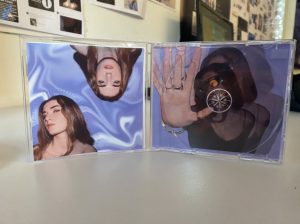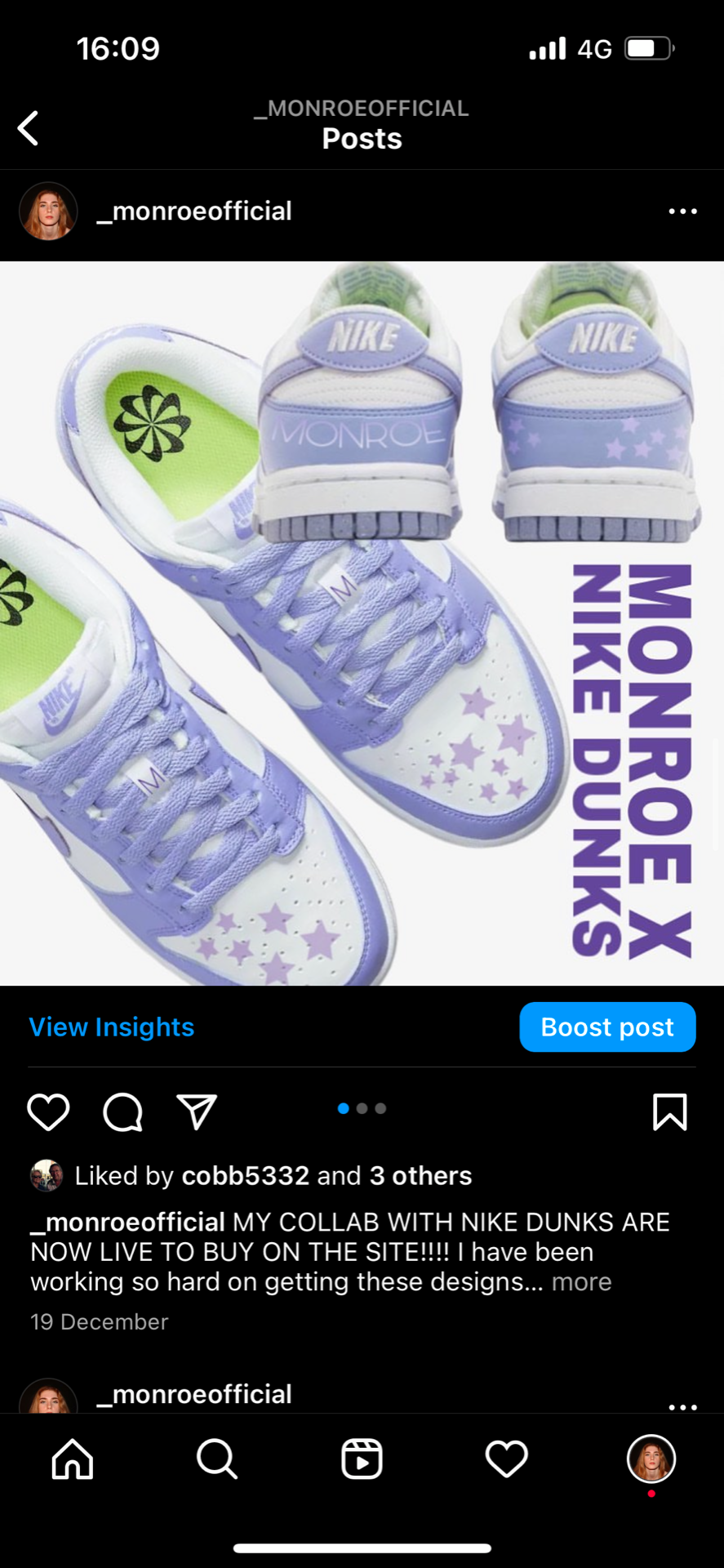How do your products represent social groups or issues?
How did your research inform your products and the way they use or challenge conventions?
How do the elements of your production work together to create a sense of branding?
How do your products engage with the audience?
All of the products in a package work together to create a cohesive brand using various forms of media language across various media platforms and texts. The music video is for a song on the artists’ digipak, which is then promoted and talked about often on the social media page, creating a whole link of branding. Our mission statement describes our star as ‘up-and-coming, unique and inventive’, so it is important to signify this when creating the artist’s brand. Between our music video, digipak and social media page, there is a clear idea of who our star is meant to be and how she is represented in media so that our target audience now knows what to expect from our star and will therefore not reject the text (Hall.) Therefore, the target audience would expect to see relatable posts and content from the star as she is young and new to fame, as well as unique and quirky products and  photoshoots. The narrative and mise en scene like outfits and lighting in the music video connote to the genre of the star
photoshoots. The narrative and mise en scene like outfits and lighting in the music video connote to the genre of the star

and song while the body language and angles of the digipak images and graphics portray the artist as hoped in our star image. The audience can therefore decode the contrast between her ordinary and extraordinary presence. Narrative codes (Barthes) such as a semic code are relayed through the digipak, social media page and music video features as they have connotations of her star image, brand and also her as a normal person. The teasing of merch or songs dropping on social media could also be an action code, as it is leading the audience to expect what may be coming soon. Our mission statement helped us to convey these features of our star well as we knew exactly how we wanted her to be portrayed.
We researched and analysed pop music videos by artists such as Billie Eilish and Harry styles to identify the narrative and performance ratio and the conventional repertoire of elements for a pop music video. Lacey believes that the repertoire of elements is the aspect of the product that the audience would expect to see. We found that many of these videos for this genre had a narrative of relationships and love and a mise en scene that was frequently used, such as camera close-ups, bright  colours, cool clothing and emotion. We made Padlets on camera and star images in order to investigate this and how we want our product to look. In our own production, we stuck to these conventions and used a mixture of narrative and performance in our video, however, we used a lot more performance. This research impacted our mise en scene as we included bright colours such as purples, pinks and blues, in the makeup and costume and used lighting to fit the emotion of each scene. All of our filming, camera work and editing were influenced by our investigation into conventional pop videos and included the overarching conventions of editing to the beat, lip syncing and selling the star.
colours, cool clothing and emotion. We made Padlets on camera and star images in order to investigate this and how we want our product to look. In our own production, we stuck to these conventions and used a mixture of narrative and performance in our video, however, we used a lot more performance. This research impacted our mise en scene as we included bright colours such as purples, pinks and blues, in the makeup and costume and used lighting to fit the emotion of each scene. All of our filming, camera work and editing were influenced by our investigation into conventional pop videos and included the overarching conventions of editing to the beat, lip syncing and selling the star.
Our star image consists of our artist being portrayed as a sultry, sexy, unique and fun character, as we aimed to represent a female RnB and pop genre. It was important to represent our artist this way as it is the most conventional for a young, female RnB artist, and in particular how the genre and artist would be represented on the digipak through the medium of print media language. 
As Hall describes, it is important to encode media text with expected signs and symbols to gain a good reaction from the audience, and also portray our star image (Dyer.) We used mise en scene in the photographing and editing the photos we used for our digipak to convey our star image and genre. Our artist’s makeup and outfit included light and bright colours to symbolise her fun and bright side. However, the main focus was her sultry body language, portraying her as a sexy female singer who is powerful and in charge. These are all semic codes (Barthes) as the audience can read this mise en scene and make conclusions as to how they conceive our star, as unique and sexy. The photoshop and fonts in the editing of our digipak also conveys our stars’ bolder and unique side and appeals to the young, contemporary audience. These features represent a semic code as it connotes her image.
Artists use social media to engage with their audience and therefore create a marketing and advertising campaign. It is important for any advertising and marketing to maintain Blumler and Katz’ ideas about maximising engagement and that means you need to encourage social interaction, personal identity, entertainment and information for the audience. If the repertoire of elements  does not align with the typical conventions of that genre’s artist’s social media, the audience may then reject the text, and it will not appeal to them. We first of all established who our audience was so we could specifically reach out to them. We discovered that all genders from the ages of 15-30 would be our target audience for our stars’ social media page. For example, in order to fulfil Blumler and Katz theory, we ensured that there were websites for the audience to visit and polls on stories to encourage social interaction. We also posted a range of everyday life, entertaining posts from when our artist was on tour or just at home, portraying the ordinary aspect of their star image, as well as informative posts about tour dates, and when any products were coming out. Posting about merchandise and her
does not align with the typical conventions of that genre’s artist’s social media, the audience may then reject the text, and it will not appeal to them. We first of all established who our audience was so we could specifically reach out to them. We discovered that all genders from the ages of 15-30 would be our target audience for our stars’ social media page. For example, in order to fulfil Blumler and Katz theory, we ensured that there were websites for the audience to visit and polls on stories to encourage social interaction. We also posted a range of everyday life, entertaining posts from when our artist was on tour or just at home, portraying the ordinary aspect of their star image, as well as informative posts about tour dates, and when any products were coming out. Posting about merchandise and her  normal life beyond her career helps the audience to relate more to the artist and therefore includes personal identity, this can encourage reinforcement of the artist’s ideas and opinions.
normal life beyond her career helps the audience to relate more to the artist and therefore includes personal identity, this can encourage reinforcement of the artist’s ideas and opinions.